BoatNews.com

Maxis Yachts, from the pioneers of the Whitbread to the modern era
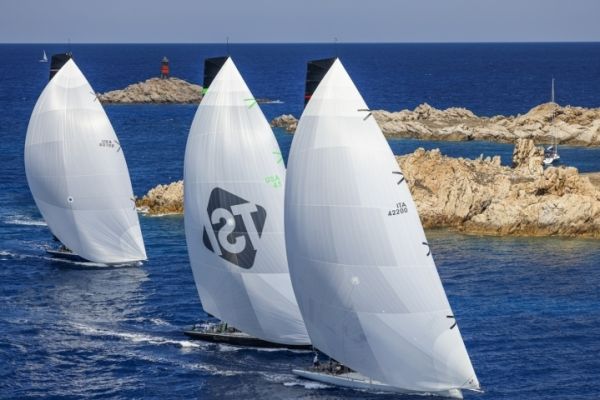
Maxis are yachts whose size is fixed at 100 feet to be able to race in certain races. If the class now includes ultra-technological yachts, their origin dates back to the 1970s.
The development of inshore and offshore regattas
In the 19th century, commercial motivations drove the clippers to return as quickly as possible from China to be the first to market their cargoes of tea. At the same time, coastal regattas, such as the America's Cup and its first edition in 1851, and offshore with the Transatlantic Race in 1866, began to develop. By the end of the 19th century, the boats evolved into pure racing yachts , thanks to the will of owners and pioneering designers, such as Herreshoff nicholson or William Fife . They have produced many boats over 100 feet in J Class in the 1930s.
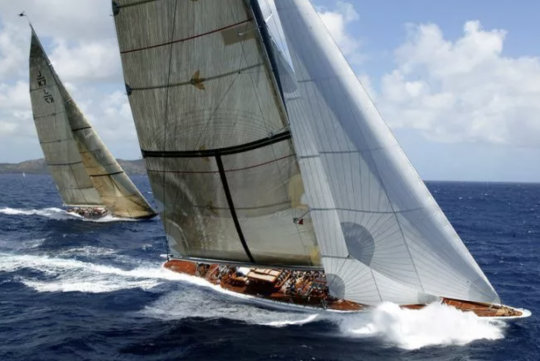
The modern era of Maxis in the 1960s
The modern era of Maxis began in the 1960s, with the design of Stormvogel for the Dutchman Cornelis Bruynzeel imitated by Americans like Huey Long with Ondines or Jim Kilroy and Kialoas . Their Maxis raced around the globe, on the Newport Bermuda, the Transpac, the Fastnet, the Sydney Hobart or Cape Town - Rio.
It is in this context that the International Class A Yacht Association was created on August 6, 1979, to encourage racing and yachting enthusiasts to build boats and organizations to launch races throughout the world. For the anecdote, it was none other than Baron Edmond de Rothschild , owner of Gitana VI, who was appointed president.
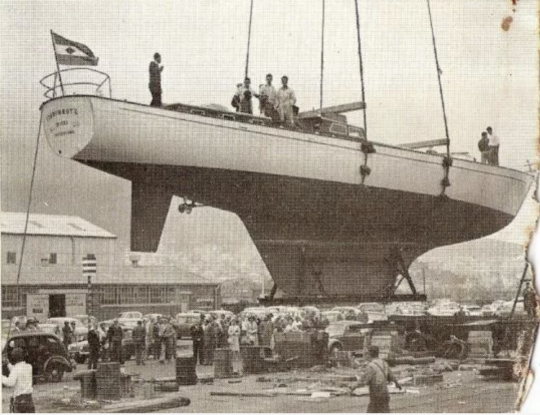
Birth of the A-class, the Maxi Yacht class
The A Class referred to maxi yachts with a rating of 60 to 70 feet under the IOR gauge , used at that time. However, the majority were 80 feet with a displacement of 35 to 40 tons. Known to be the largest racing yachts , Maxis always have the best chance of finishing first . Fast enough and with good ocean capabilities, they became the boats chosen by the pioneers of the Whitbread Round the World Race, the forerunner of The Ocean Race, between 1973 and 1993.
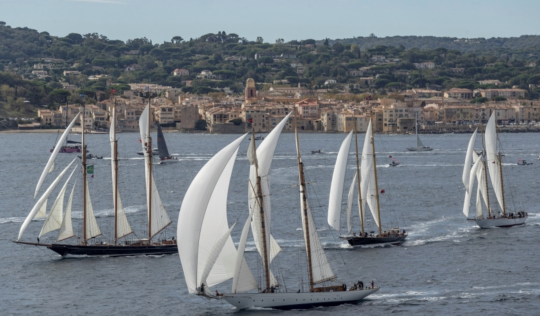
Modern yachts and a new rule
Following the disappearance of the IOR rule and the creation by the Offshore Racing Council of an international class for Maxis in 1994, new owners decided to join the circuit. The 90's also saw the creation of a new type of Maxis, designed by Luca Bassani, the Wally Yachts , with the construction of Genie of the Lamp and Magic Carpet . These fast racing-cruising yachts have breathed new life into the Maxi class, combining state-of-the-art technology and performance with a certain style that is unique to the brand.
During the 2000s, the Maxi Class came under the IRC rule and the International Class A Yacht Association renamed simply International Maxi Association . The IRC was finally adopted in 2008. This resulted in a diversification of the fleet in terms of size, performance and age of boats.
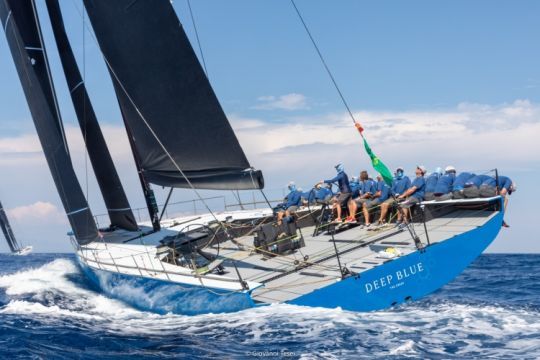
Technological designs
Today, the architects design the best possible boat in response to a precise set of specifications. They let the IRC decide on its rating. Compared to their IOR ancestors of the 1980s, modern racing Maxis are generally around a third of the displacement, fuller at the ends, and built with advanced materials. Carbon fiber, used only for hulls, has been extended to masts and spars, sails and even rigging. Mobile ballast, liquid ballast and pendulum keels are now allowed.
Some Maxis, like the 60-foot Reichel/Pugh design, Wild Oats, have retractable DSS side foils for better righting torque. The next evolution may well see Maxis with foils.
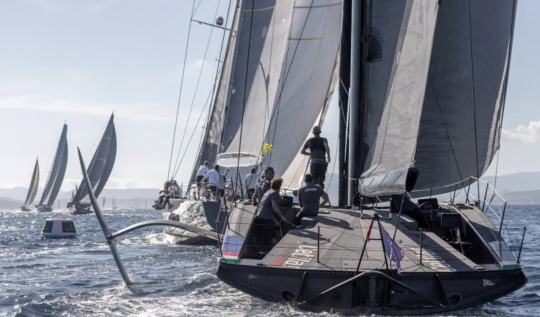
A maximum size for some regattas
The size of modern Maxis starts at 60 feet, with no theoretical size limit. Although 100 feet, or 30.48 m long, has been considered the maximum size for racing, and the maximum size for racing in the Sydney Hobart and Newport Bermuda.
Some Maxis are however larger like Mari Cha III and IV, renamed Samurai. Today, the largest yachts , between 120 and 125 feet, are built by Baltic Yachts , Southern Wind and Nautor Swan.
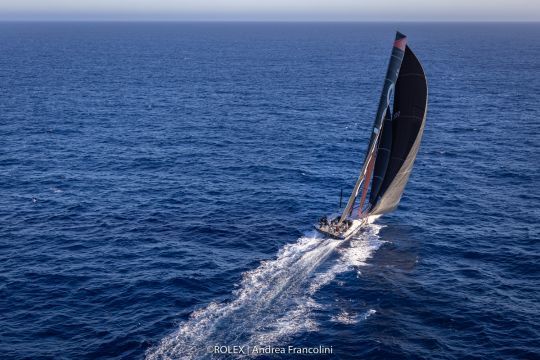
Unique designs and semi-custom projects
Within the class, there are all types of Maxi yachts , from pure racers to racing cruisers . Some, especially those intended solely for racing, are unique in design. The majority are semi-custom production models from Southern Wind, Nautor Swan, Vismara, Mylius, CNB.
In view of the maturity of the class, the fleet includes large age differences between the boats. One of the good surprises was the rebirth of the J Class, the first Maxis of the 1930s. Today, nine of them are sailing, some of them originals, most of them are new creations based on the original plans. The Swan 65s are also very popular, one of them having won the first Whitbread Round the World Race.
- New Yachts for Sale!
- Regatta news
- July, 2024 (4)
- June, 2024 (2)
- May, 2024 (2)
- April, 2024 (4)
0 Photo-album Maxi Longobarda
- by Team Racing-Yachts.com


We have visited the Maxi 82 by Farr Yacht Design in Portugal.
Longobarda was a breakthrough IOR maxi that set a new standard in the class during 1989 until the early 1990s. She was the product of a successful combination of Bruce Farr design talent, SAI Ambrosini (Italy) build quality and a no-expense-spared budget, courtesy of her owner, Italian yachtsman Gianni Varasi (who had previously owned Raul Gardini's earlier yacht, Il Moro di Venezia II ).
Now refitted into a fast performance cruiser
The reportage you can find via this link : https://tinyurl.com/vax7nlz
Send to friend.
Yachting World
- Digital Edition

Video: watch the famous maxi Kialoa III back in action at Antigua Sailing Week
- Elaine Bunting
- May 3, 2016
The IOR maxi Kialoa III last sailed at Antigua Sailing Week in 1979. This year she was back after sailing 8,000 miles to get there

One of the stars at this year’s Antigua Sailing Week was the maxi Kialoa III. The 78-footer was visiting for the first time since winning the regatta in 1979.
This video shows some of the action from racing during the week.
Kialoa III is a Sparkman & Stephens design. She was one of a string of IOR maxis named Kialoa owned by Australian Jim Kilroy that dominated the circuit some 30 years ago.
The boat is best remembered for her line honours victory in the 1975 Sydney Hobart when she broke the race record that stood for 21 years. She was unbeatable in the maxi circuit in the 70s and to get to Antigua Sailing Week has sailed over 8,000 miles.

Understanding the IOR Rating System & Formula
- August 25th, 2017
- Yachtmaster
Although the magazines and marinas are full of flat designed, chined and wide-sterned modern yachts made to perform and host large volumes, a great number of yachts nowadays have their origins in the Seventies and Eighties as we call them “Classic GRP Yachts”. As I was roaming the jetties of my home marina I came to rest in front of such a very, very nice and well kept yacht: A German made Hanseat in blue.
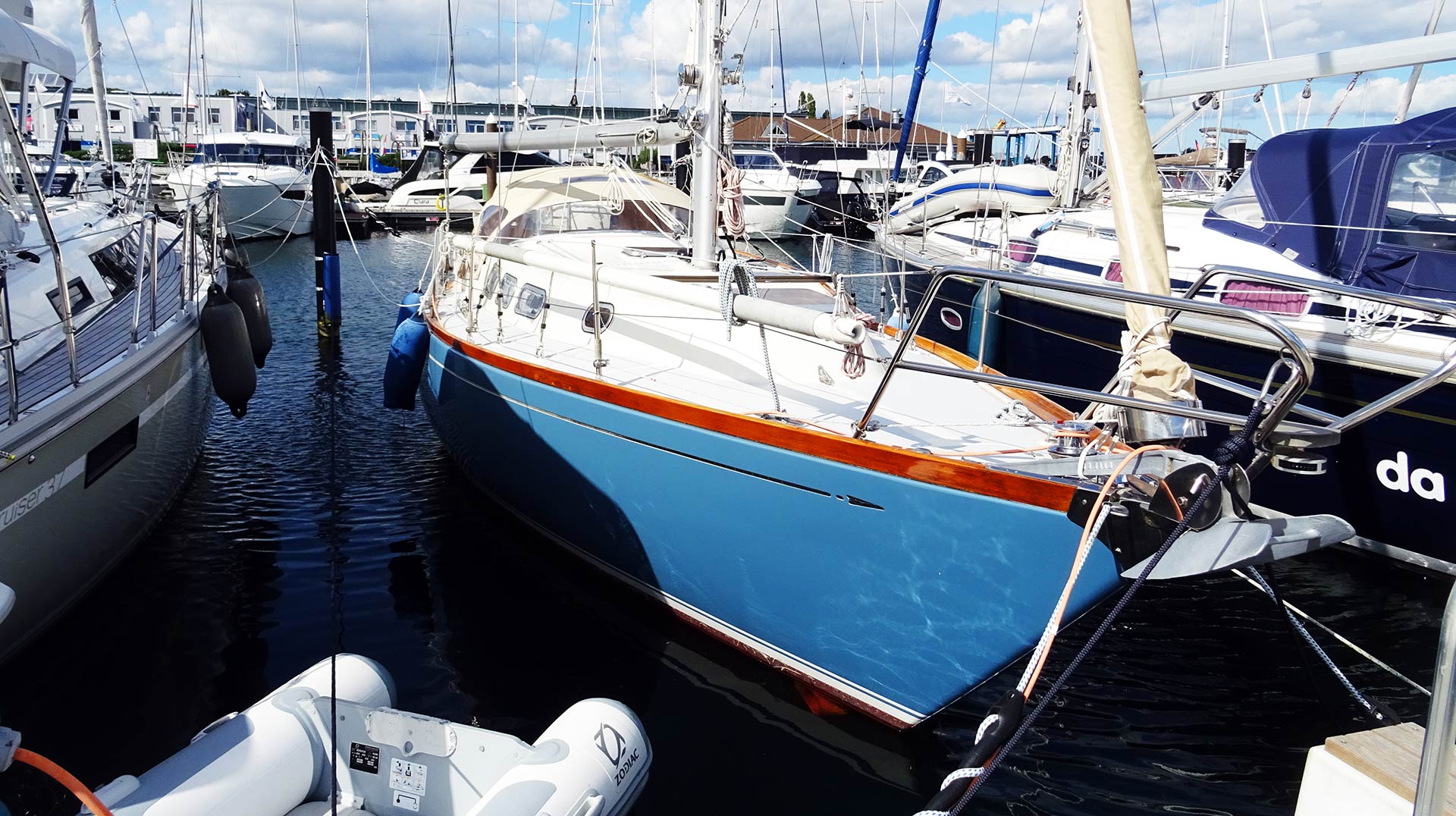
She bears the distinctive shape of a whole class of yachts which defined the Seventies yacht design: The IOR-yachts. IOR? Most of you may know this fictional conversation very well by their own neighbours in the berth: “Ah, this is a nice, classic boat indeed!”, “Yes, I like her. Her lines. She´s an IOR-yacht!”, “Yeah, for sure!”. IOR. We are all too familiar with the wide bulky hull shaped like a tea kettle. But what does IOR really mean? Here´s a short but hopefully clear explanation.
History of the IOR-Rating System
First of all, IOR, the “International Offshore Rule”, was a rating system introduced in the Sixties when for the first time in history regatta-rules and handicap ratings of Europe (namely of the Royal Ocean Racing Club of England, RORC) and America (to be precise of the CCA, the Cruising Club of America) sought to standardize their set of rules to ensure a worldwide rating system for sailing yacht races. The IOR has been kept in place up until the early Eighties when it was superseded by the more technical and scientific advanced IMS and IRC-rating, which are in place still today.
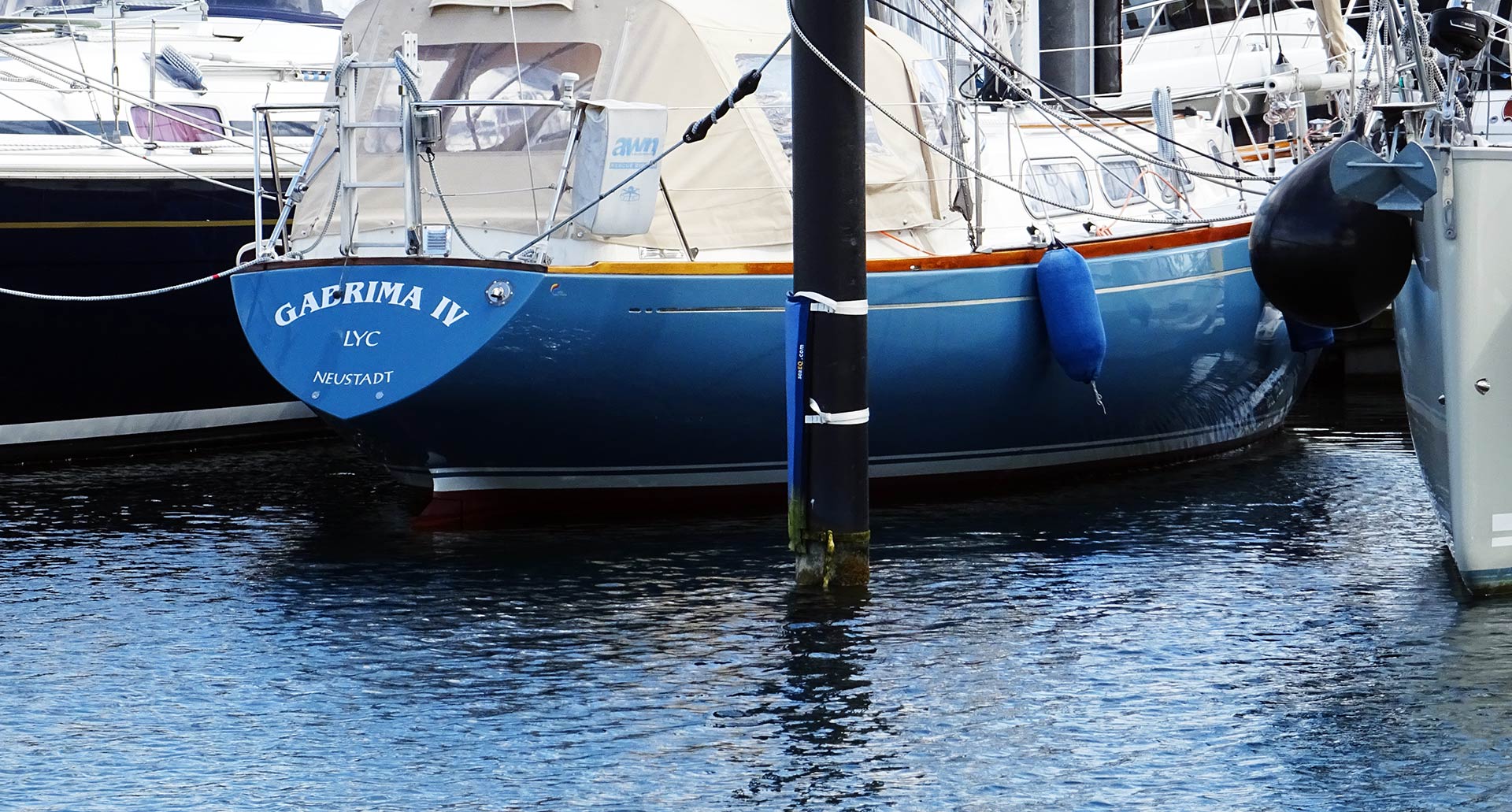
The set of rules changed massively during the years as their trustees tried to keep up with the pace of yacht designers and boat builders who sought to interpret the rules in such a way that thy would make the fastest boats possible within this set of rules. In such an environment, as we all know from other occasions, the mind of the people does incredible things and so the IOR set of rules sparked a whole generation of naval architects to create yachts and hull shapes within this set of rules – leading to this one, very iconic feature of IOR-yachts: The tea kettle shape of the hull. But what´s to it?
Design Features of Sailing Yachts under IOR-Rating
Well, in short, the IOR called for short waterline lengths. It favoured yachts with a short waterline and penalized longer boats. But as we all know: The longer the waterline length, the fast the boat sails. By the same time, naval architects and designers of the boats tried to keep the wetted surface of the yacht as small as possible, shortening the surface area of both hull, keel and rudder blades.
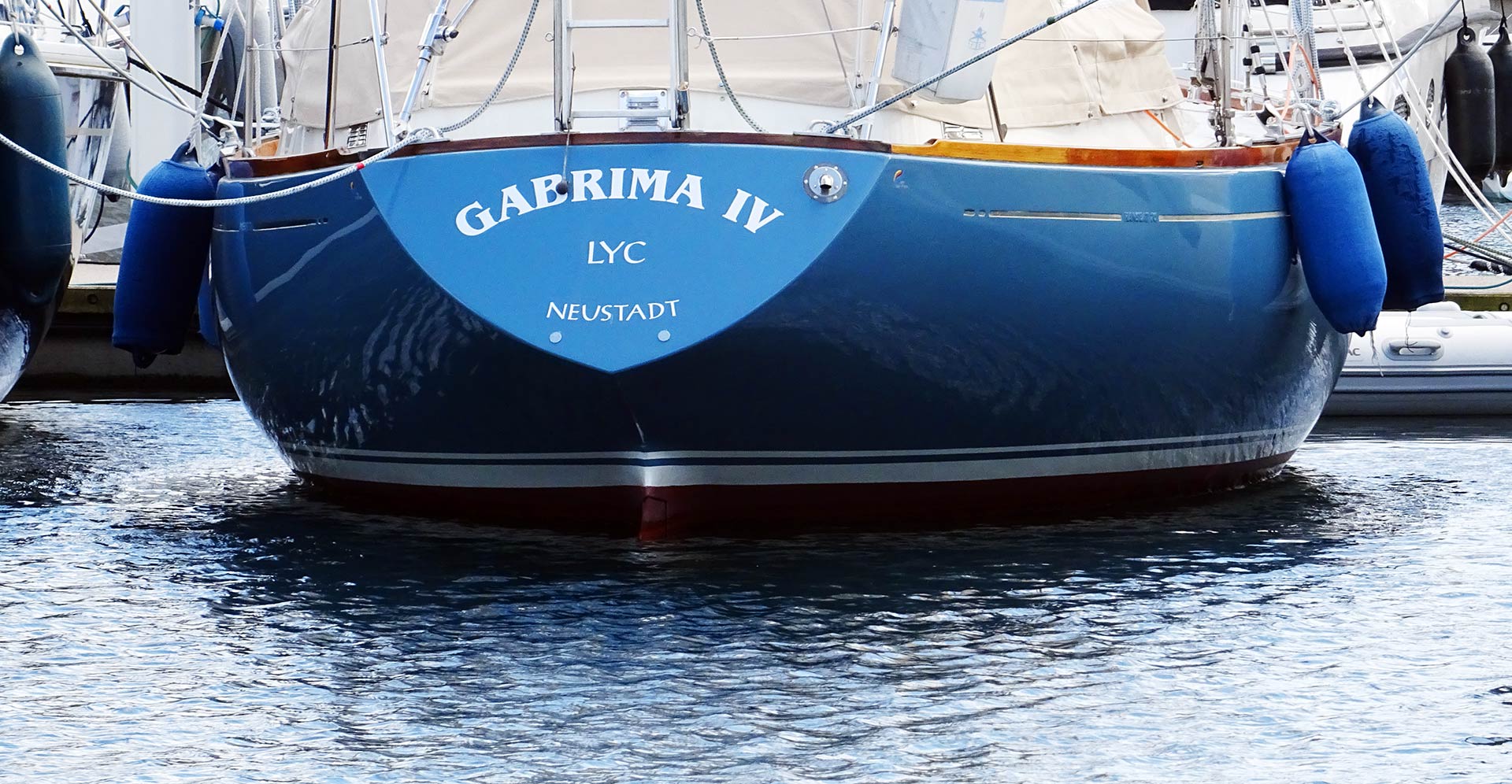
The yachts had been fitted with a sharp bow and the distinct “cruiser stern” which bears a large overhang. Now, let´s cast off and get the sails hoisted. What happens? First of all, when the IOR-shaped boat is now sailing, it will start to heel to leeward as expected. Due to the unique wide girth, the “tea kettle”-hull will now immerse into the water. As you may imagine by looking at such a tea kettle-shaped hull, due to the unique design features of the IOR-shaped hull, the length of the waterline increases greatly thus “imposing” a larger hull and increasing speed. That´s the theory.
Implications of IOR-designed Hulls
It really worked well for a number of yachts and IOR proved to be the offshore rule setting off a huge wave of new yachts to be built and new races to be raced. But the IOR-yachts had also some unwanted implications and sailing characteristics which are nowadays considered frowned upon the least if not to say dangerous.
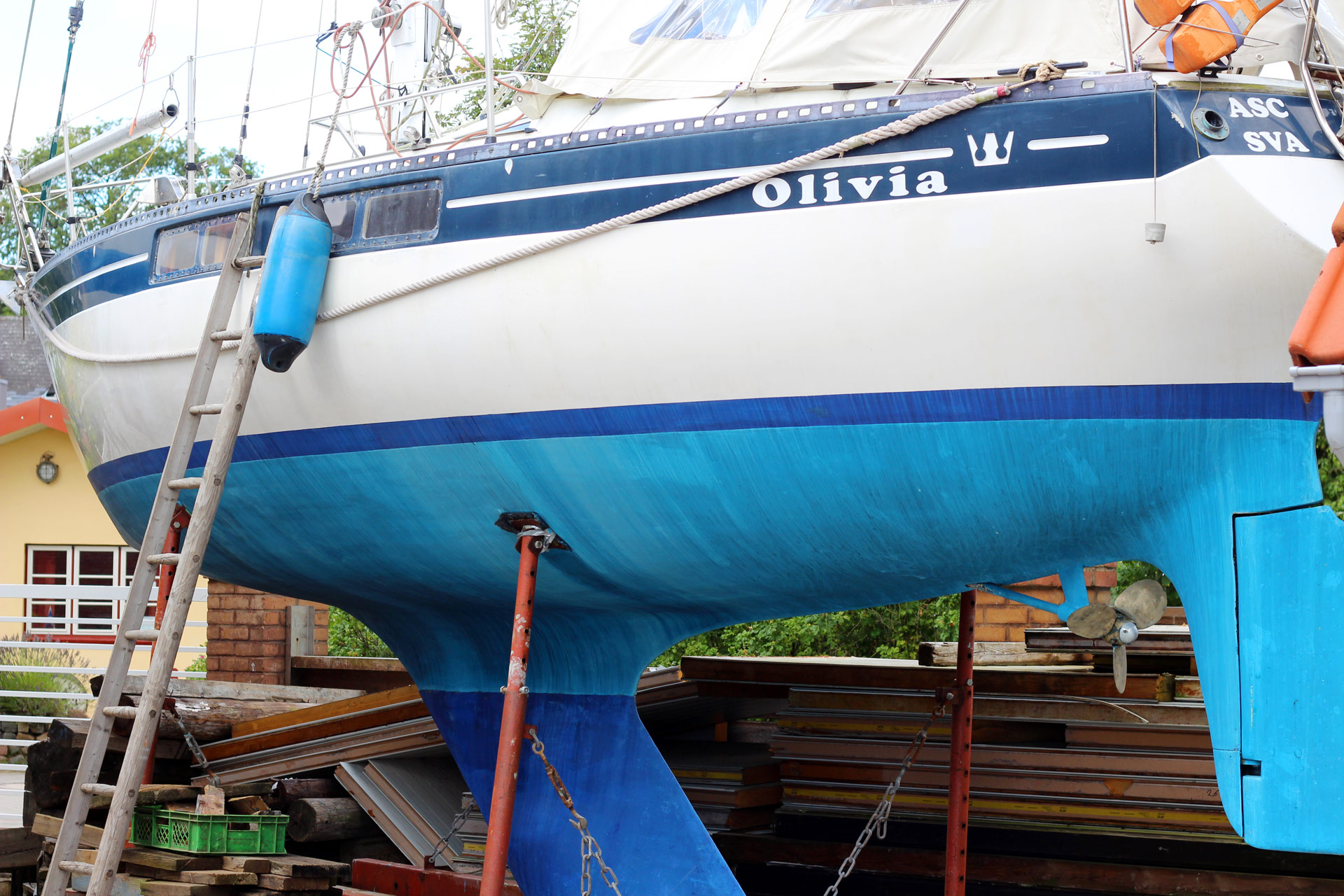
First of all, IOR-yachts are a kind of unstable boats in terms of seakindness. Due to the round chined hull and the wide girth, those boats are sailing massively heeled and are always in heavy motion even in lighter swell. Modern yachts with wider sterns and pronounced chines are heeling up to a certain point and will then sail very stable. Also, during the catastrophic events of the iconic Fastnet Race of 1979 more of those unwanted and possibly dangerous effects of IOR-constructions emerged in a way that the formula itself, its official role in regulating races and the design features had been abandoned by both the commissions as well as by the naval architects. If you want to dive deeper into this topic, there are numerous books and websites available.
In present naval design of yachts the IOR-inspired hull shapes have completely vanished. Although IOR-yachts have undeniable qualities in sailing hard upwind, they are nowadays considered too shaky in terms of sailing characteristics. Also, the somewhat narrow aft sections of these yachts do only leave space for quarter berths the best – best example here is the Beneteau FIRST 30 on which I did have the pleasure to make a 7-day-short dash to the Island of Bornholm (read the full articles here and here ). This yacht offered way more comfort and volume on 30 feet than my 33 feet IOR-era King´s Cruiser 33.
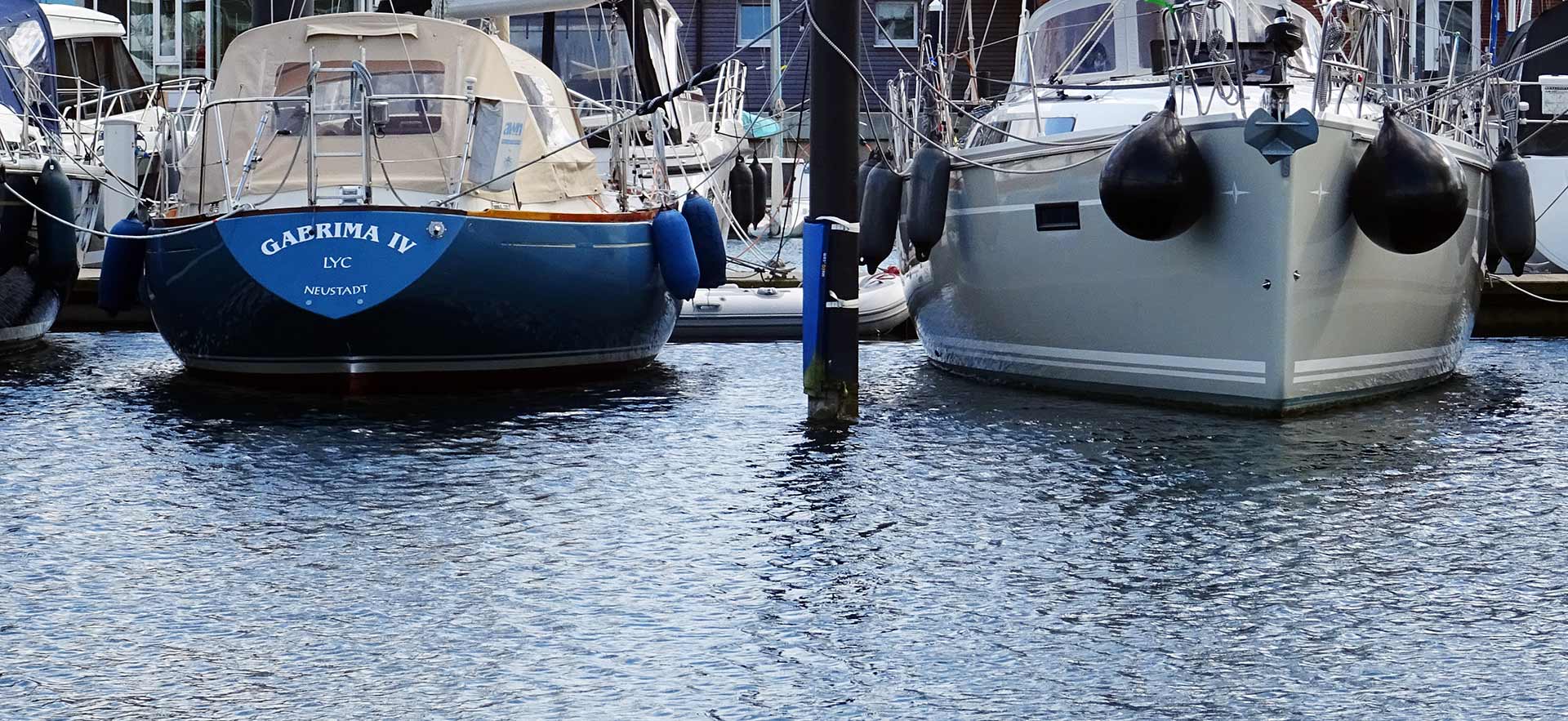
So in the end, the IOR-era was an attempt to flatten the worldwide rating systems to pave the way for a global racing circus. Designers reached out far to squeeze out the best designs possible. In a way the IOR proved that a bright mind can create miracles even inside the narrowest borders. But IOR also proved that too many rules can have limitations and even dangerous aspects as well. I personally admire some of the IOR-era designs, such as my own boat – but I also praise the technological advance that brought us faster, safer and beautiful designs as well.
Other interesting articles on that topic:
What´s the Yardstick rating system all about?
Tim Kroeger on racing the Swan 60 .
Sailing a Pogo 40 Racing Yacht.
Design № 179
IOR MAXI "HISPANA"
< Back to all designs
RACE RESULTS
FARR MAGAZINE
GET UPDATES
ENVIRONMENT
DESIGNS BY LENGTH
DESIGNS BY NUMBER
VOLVO OCEAN RACE
SUPERYACHTS
AMERICA'S CUP
Design 179 was designed early in 1987 as a round the buoys IOR Maxi race boat. With keel and trim variations the boat would also be entered in long distance races like the Route of Discovery race from Cadiz Bay, Spain to Santo Domingo.
The design program benefited from limited tank testing of 1/4 scale models to examine variations in hulls and appendages. Final beam, length and displacement figures were selected following a close study of the existing Maxi fleet and extensive research using our in-house VPP's. The resulting boat is positioned toward the heavy end of the existing fleet with generous sail area, high stability and moderate beam and length.
Structural design used the approach our office developed for the 1985/86 Whitbread Maxi's as a basis with the laminates upgraded to make use of the carbon fibers available at the time. Keel, internal ballast engine and mast loads are supported by a primary aluminum frame. The resulting structure was the lighted Maxi structure at the time allowing the large internal ballast to be accumulated as low and central as possible reducing the volume of lead in the keel to a minimum.
The masthead rig, with very large mainsail, was selected as a simple arrangement that would give much of the advantage of fractional rigs, but also very good light airs and running performance, so necessary on Olympic and windward-leeward courses.
The boat was built by Pepin Gonzales of Barracuda Yachts in Palma. Barracuda had not built a boat larger than 40 feet before this project and so needed full construction details to ensure the final product complied with design goals. Although the job took longer than normal (over 15 months), Pepin and a small team of craftsmen performed one of the best laminating jobs we have seen.
To date the boat has been trialed in the Mediterranean, raced in a maxi series and sailed in the Route of Discovery race. Performance figures from the trials indicate that predicted figures have been attained or exceeded. HISPANIA won its first race at the maxi regatta in St. Tropez. While this victory and the winning margin was impressive for the boat's first contest, the fleet did not include some of the top existing maxi boats.
It is unfortunate that Design 179 will be almost 3 years old before it lines up against the top competitors in earnest. We feel however, that if well campaigned, HISPANIA will put on a good showing against the top Round the Buoys Maxis.
Design 207 is another Round the Buoys Maxi that will incorporate many design refinements and adaption to rule changes since Design 179 was conceived. While our dominance in the Whitbread Maxi fleet provides a good background for our Round the Buoys boats, the two boat styles are substantially different in concept.
Farr Yacht Design is making a concerted effort to become dominant in the Round the Buoys Maxi fleet over the next decade. Although we have been dominant at all other levels of IOR racing, we have not had the opportunity to compete in the Maxi Round the Buoys fleet until Designs 179 and 207 start racing.
We look forward to this competition and remain dedicated to the task of producing designs that will set the pace for the future.
24.475 m/80.30 ft
19.68 m/64.57 ft
6.070 m/19.92 ft
4.332 m/14.21 ft
38,142 Kg/83,912 Lbs
30.625 m/100.47 ft
8.670 m/28.44 ft
28.040 m/91.99 ft
10.460 m/34.32 ft
Sailplan >
Deck Layout >
Interior Layout >
Farr Yacht Design
100 Severn Avenue, Suite 101
Annapolis, MD 21403
© 2018
A site dedicated to documenting some famous IOR raceboats and events.
- Quarter Tonners
- Half Tonners
- Three-Quarter Tonners
- One Tonners
- Two Tonners +
- 50-Foot Class
- IOR Regatta Galleries
- Racing News
- IOR film archive
29 August 2019
The end of the ior.
| Australia's during the last Admiral's Cup under IOR in 1993, not long before the eventual demise of the IOR altogether |
| ILC40s, as a level-rating derivative of the IMS rule, seen here competing in the 1995 Admiral's Cup |
| The 1976 French cat rigged Mini Tonner |
| The Farr One Ton centreboarder, , 1977 |
| trying to stay on her feet during the 1987 Irish Admiral's Cup trials |
| (left), and sporting their big no.1 genoas during the first race of the 1981 Admiral's Cup |
| one of the new breed of Farr-designed light displacement centreboarders of 1977, showing the relatively clean lines that were possible before the ITC forced an increase in displacement |
| The Whitbread Maxi ketch |
| , the biggest and fastest of the IOR Maxis |
| (above and below) |

| Cookson's followed the theme and was dominant in the 2000 Kenwood Cup |
| one of three new Farr-designed Whitbread Maxi ketches for the 1993-94 race |

2 comments:

Thanks for sharing.This is nice and helpful post. Yacht

This comment has been removed by the author.
Omsk Oblast
| Омская область | |
| Anthem: | |
| Coordinates: 73°16′E / 56.217°N 73.267°E / 56.217; 73.267 | |
| Country | |
| Administrative center | |
| Government | |
| • Body | |
| • | (acting) |
| Area | |
| • Total | 141,140 km (54,490 sq mi) |
| • Rank | |
| Population ( ) | |
| • Total | 1,858,798 |
| • Estimate | 1,960,081 |
| • Rank | |
| • Density | 13/km (34/sq mi) |
| • | 73.5% |
| • | 26.5% |
| ( ) | |
| RU-OMS | |
| 55 | |
| ID | 52000000 |
| Official languages | |
| Website | |
Omsk Oblast ( Russian : О́мская о́бласть , romanized : Omskaya oblast' ) is a federal subject of Russia (an oblast ), located in southwestern Siberia . The oblast has an area of 139,700 square kilometers (53,900 sq mi) . Its population is 1,977,665 ( 2010 Census ) [9] with the majority, 1.12 million, living in Omsk , the administrative center .
Prehistory and the Middle Ages
Exploration of siberia, russian empire, soviet years, post-soviet era, administrative divisions, demographics, notable people, sister relationships.

The oblast borders Tyumen Oblast in the north and west, Novosibirsk Oblast and Tomsk Oblast in the east, and Kazakhstan in the south.
Omsk Oblast shares borders with Kazakhstan ( North Kazakhstan Region and Pavlodar Region ) to the south, Tyumen Oblast in the west and Novosibirsk Oblast and Tomsk Oblast in the east. It is included in the Siberian Federal District .
The territory stretches for 600 km (370 mi) from north to south and 300 km (190 mi) from west to east. The main water artery is the Irtysh River and its tributaries the Ishim , Om , Osha , and Tara Rivers. The region is located in the West Siberian Plain , consisting of mostly flat terrain. In the south is the Ishim Plain , gradually turning into steppe, forest and swampy taiga to the north. The soil is sandy and silty. [10] Along the Irtysh River, in t. N. Irtysh region, there is an "oasis" microclimate, with a wooded landscape and gullies. There, the most fertile land in the region can be found. The Omsk region contains many lakes, the largest of which are Tenis -Saltaim, Ik, Ebeyty , Ulzhay and Tobol-Kushly.
The highest elevation in the Omsk region - about 150 m (490 ft) Upland village, the lowest elevation is the water's edge on the Irtysh - 41 metres (135 ft) , near the village of Little Beach. [ clarification needed ]
The property is located in Omsk region 28 specially protected natural territories of regional destinations. Including parks in Bolshereche and Omsk ("Bird's harbor"). [ clarification needed ]
The oblast has a classic continental climate, with cold, snowy winters and hot, dry summers. Average January temperatures range from −42 to −30 °C (−44 to −22 °F) . Average July temperatures range from 25 to 28 °C (77 to 82 °F) and can reach up to 35 °C (95 °F) and even 40 °C (104 °F) . Annual rainfall averages 300–400 mm (12–16 in) . Sunny days predominate.
The southern plains have notably longer and warmer summers and a delayed onset of freezing temperatures. They are also significantly drier than the northern forests, receiving only 250–300 mm (9.8–11.8 in) precipitation annually. Winters, however, are as severe on the plains as they are further north. Spring rains are rare, but late spring freezes are not. The early part of the summer is frequently dominated by hot, dry southern winds.
As of 1 February 2016 , [ update ] on the territory of the Omsk region, there are 35 areas that have the status of protected areas (PAs), regional and local importance.
Archeological findings indicate that the present day territory of the oblast has been inhabited for the last 14,000 years. Neolithic societies in the area lived by fishing and hunting. About three thousand years ago, pastoralism began to take hold. Ust'-Ishim man , the remains of a man that lived 45,000 years ago, was discovered in Omsk Oblast.
Various Turkic states dominated the area throughout the Medieval era. The most notable of these were the Western Turkic Khaganate and the Siberian Khanate . Siberian Tatars , Mongols , Khanty and Mansi tribes, along with others, inhabited the territory.
The Russian history of Omsk began with the 1584 arrival of a Cossack force under the command of ataman Yermak Timofeyevich , who defeated local rulers and established nominal Russian control of the area. To support further expansion tsars Feodor I and Boris Godunov initiated the construction of fortified settlements and military outposts in the south of Siberia in order to defend their subjects from raiding nomadic tribesmen and to exert authority over local populations, specifically over the tribute-paying Siberian Tatars of The Baraba Lands. The first permanent Russian settlement in the region, the city of Tara , was founded in 1594, soon it began to play an important part in fur trade that connected Russia with Central Asia and China.
In 1716 a fortress was constructed at the confluence of the Om and Irtysh rivers on the orders of sublieutenant Ivan Bugholtz. The fortress would form the nucleus for the development of the future city of Omsk. By the second half of the 18th century, Omsk fortress was the largest building of any kind in the eastern part of Russia.
As Russian settlements continued to spread through the Yenisei , Tobol and Irtysh watersheds in the course of the 18th century, so did the development of the Omsk and the surrounding region. In 1753 a customs post was established to tax goods brought into the city by the ever-increasing trade with Kazakh tribesmen. In 1764, when the Siberian provinces of Russia were organized into two governorates with centers in Irkutsk and Tobolsk , the city of Tara and the fortress of Omsk were assigned to the latter. In 1780, on the orders of Catherine the Great the fortress was transferred to Kolyvan Oblast . By this time Omsk had grown to the size of a small city, however, from 1797 to 1804 it did not possess its own uyezd .
In 1804, the territories surrounding Omsk were organized into the Omsk Okrug . The city rose to prominence when Siberia was once again reorganized in 1822, Omsk became the administrative center of the General Governorate of Eastern Siberia rising above the old center of Siberia, Tobolsk. The new governorate was divided into oblasts around the cities of Omsk, Petropavlovsk, Semipalatinsk and Ust-Kamenogrsk populated by Russian colonists and okrugs populated by Kazakh nomads. In subsequent reforms the name of the Oblast was changed repeatedly to The Oblast of The Siberian Kyrgyz (1854), Akmolinsk Oblast (1868), and Omsk Oblast (1917) before finally reverting to the Omsk Governorate in 1918. The authority of the oblast followed further expansion of the empire to Central Asia and included significant parts of modern-day Kazakhstan .
In the 19th century, Omsk, given its strong system of frontier fortresses, became notorious as a premier destination for political exiles and prisoners from the European part of the Russian Empire. Decembrists , Polish rebels , French prisoners of war and political activists of every stripe found their way to Siberia. Among them was Fyodor Dostoyevsky , who spent four years (1850–1854) at the Omsk prison. [11]
The early nineteenth century also saw the growth of industry in the city and in the rest of the Irtysh basin. The Siberian Cossack Army was headquartered in Omsk after 1808 and contributed to the development of the city, by the beginning of the 20th century the Cossacks were a dominant component in the society of both the city of Omsk and the surrounding lands, having reached a population of 174 thousand and holding title to five million hectares of agricultural land. The 18th and 19th centuries also saw the influx of a significant number of German immigrants both from Russia's Volga Regions and from abroad.
In 1925 the Omsk governorate was dissolved into the newly formed Siberian Krai and again reorganized, this time as an Oblast by order of the All-Russian Central Executive Committee on 7 December 1934. Parts of the Ob-Irtysh Oblast and the West Siberian Krai as well as the southern part of Chelyabinsk Oblast were given over to Omsk. In 1943, Kurgan Oblast created from the western portion of the Chelyabinsk Oblast also got a number of Omsk territories. In 1944, the northern part of the Omsk Oblast along with the districts previously transferred to Kurgan became newly established Tyumen Oblast that included Khanty-Mansi and Yamalo-Nenets autonomous okrugs.
The 1950s saw the creation of the petroleum processing industry, as well as the development of various high-technology facilities that came to define the economy of the Oblast for the remainder of the century.
With the dissolution of the Soviet Union the oblast became part of the newly independent Russian Federation. The independence of Kazakhstan gave Omsk an international border to the south, while continued federal policy aiming to rectify the effects of Stalin era population transfers led to the creation of a national German district in an area with a significant, although not a majority, German population around the town of Azovo . On 19 May 1996 Omsk Oblast signed a power-sharing agreement with the federal government, granting it autonomy. [12] This agreement would be abolished on 21 December 2001. [13]
During the Soviet period, the high authority in the oblast was shared between three persons: The first secretary of the Omsk CPSU Committee (who in reality had the biggest authority), the chairman of the oblast Soviet (legislative power), and the Chairman of the oblast Executive Committee (executive power). Since 1991, CPSU lost all the power, and the head of the Oblast administration, and eventually the governor was appointed/elected alongside elected regional parliament .
The politics in the oblast is governed by the Charter of Omsk Oblast. The laws within the authority of the oblast are passed by the Legislative Assembly of Omsk Oblast which is the legislative (representative) body. The highest executive body is the Omsk Oblast Administration. It also includes the executive bodies of the subdivisions such as districts, and is responsible for the daily administration. The Oblast administration supports the activities of the Governor who is the head of the oblast and acts as guarantor of the observance of the Charter in accordance with the Constitution of Russia .
As of 18 January 2019, the departmental register of registered non-profit organizations of the Office of the Ministry of Justice of the Russian Federation for the Omsk Oblast contains information on 2537 non-profit organizations, including 1332 public associations (national associations - 60, regional branches of political parties - 46, trade unions - 328, children's and youth public associations - 55), 308 religious organizations, 30 Cossack societies, and 20 public associations of Cossacks. For example, in the Omsk Oblast there are regional branches of the political parties United Russia , A Just Russia , the Communist Party of the Russian Federation , and others. [14]
As of 2008 , [ update ] Omsk Oblast is the 23rd largest economy in Russia, with a gross regional product of 10.2 billion dollars.
The economy of Omsk Oblast is heavily industrial, with well developed, and growing, service and financial sectors. Agriculture represents a smaller, but still significant, portion of the economy.
Economic activity is concentrated in Omsk, with over sixty-six thousand private enterprises registered, ranging from small-scale retailers to billion-dollar manufacturing. [15]
Omsk was ranked by Forbes as the 6th-best city in Russia for business in 2008, an improvement over its 20th-place ranking the previous year. [16]
The oblast and city governments have made efforts to improve the business climate and foster small enterprise through various incentives and government programs designed to ease the bureaucratic red-tape, a notorious feature of Russian business life, and to generate cooperation within the business community. [17]
The bulk of industrial output, as of 2009, is concentrated in food and tobacco processing ($900 million), hydrocarbon processing ($6.7 billion), chemical manufacturing ($500 m), plastics manufacturing ($200 m) and the manufacture of electrical components ($280 m). The remainder of the economy is dominated by the retail sector and agriculture.
The largest industrial enterprises include the aerospace manufacturer Polyot , the Omsk Aggregate Plant, the agricultural manufacturer Sibzavod, Omsk Baranov Motorworks, and Omsktransmash , which manufactures the T-80 main battle tank. Additionally, Omsk Rubber, the Technical Hydrocarbon Plant, Omsk-Polymer and Omsk Hydrocarbon Processing Plant, represent the petroleum and hydrocarbon industry. Omsk Hydrocarbon is one of the most important oil refineries in Russia. [18]
The oblast operates four thermal power plants, which makes it largely self-sufficient from the standpoint of energy generation.
Agricultural production is concentrated in the Isil'rul'skii District and produces wheat, barley, flax, sunflower, potato, various fruits and vegetables as well as meat, poultry and dairy products.
The food processing sector includes several breweries, a distillery and numerous food packaging enterprises.
| Year | ||
|---|---|---|
| 1926 | 2,075,967 | — |
| 1959 | 1,645,017 | −20.8% |
| 1970 | 1,823,831 | +10.9% |
| 1979 | 1,954,663 | +7.2% |
| 1989 | 2,140,336 | +9.5% |
| 2002 | 2,079,220 | −2.9% |
| 2010 | 1,977,665 | −4.9% |
| 2021 | 1,858,798 | −6.0% |
| Source: Census data | ||
Population : 1,858,798 ( 2021 Census ) ; [19] 1,977,665 ( 2010 Russian census ) ; [9] 2,079,220 ( 2002 Census ) ; [20] 2,140,336 ( 1989 Soviet census ) . [21]
Vital statistics for 2022: [22] [23]
- Births: 16,092 (8.6 per 1,000)
- Deaths: 25,900 (13.8 per 1,000)
Total fertility rate (2022): [24] 1.52 children per woman
Life expectancy (2021): [25] Total — 69.02 years (male — 64.48, female — 73.45)
According to the 2010 Census, the ethnic composition was: [9]
- 85.8% Russian
- 4.1% Kazakh
- 2.7% Ukrainian
- 2.6% German
- 0.4% Armenian
- 0.3% Belarusians
- other groups of less than five thousand persons each
- 57,518 people were registered from administrative databases, and could not declare an ethnicity. It is estimated that the proportion of ethnicities in this group is the same as that of the declared group. [26]
According to Russia's 2002 Census , Omsk Oblast has one of the lowest birth rates in Siberia. However, birth rates remain higher than the average in heavily German districts - Azovsky Nemetsky National District (24% German), Moskalensky, Poltavsky (22% Ukrainian & 11% German) and Isilkulsky (8% German), even as significant emigration to Germany acts to reduce the overall birth rate. [27] In 2009, the lowest death rate was recorded for Azovsky German National Raion (9.4 per 1000) and the highest birth rate was recorded for Moskalenskom (17.0 per 1000), Isilkulskom (15.2), Maryanovsky (15.8), Pavlogradski (15.8), Tevrizskom (16.6), Ust-Ishim (15.4) and Sherbakulskom (16.2). Regions with the highest population growth were Moskalensky area (5.5 ppm), Azovsky German National Raion (4.8 ppm), Sherbakulsky (3.8 ppm) and Pavlogradskij (3.2 ppm). [28]
| (2007) | |||||||
|---|---|---|---|---|---|---|---|
| 1,130,000 | 11,857 | 15,599 | -3,742 | 10.5 | 13.8 | -0.33% | |
| 22,500 | 327 | 245 | 82 | 14.5 | 10.9 | 0.36% | |
| 32,400 | 393 | 519 | -126 | 12.1 | 16 | -0.39% | |
| 8,800 | 125 | 160 | -35 | 14.2 | 18.1 | -0.39% | |
| Gorkovsky | 23,400 | 295 | 366 | -71 | 12.6 | 15.7 | -0.31% |
| Znamensky | 13,400 | 195 | 213 | -18 | 14.6 | 15.9 | -0.13% |
| Isilkulsky | 46,700 | 681 | 715 | -34 | 14.6 | 15.3 | -0.07% |
| Kalachinsky | 44,700 | 506 | 754 | -248 | 11.3 | 16.9 | -0.56% |
| Kolosovsky | 14,900 | 184 | 240 | -56 | 12.4 | 16.1 | -0.37% |
| Kormilovsky | 25,800 | 352 | 447 | -95 | 13.6 | 17.3 | -0.37% |
| Krutinsky | 20,000 | 248 | 343 | -95 | 12.4 | 17.1 | -0.47% |
| Lyubinsky | 41,900 | 590 | 750 | -160 | 14.1 | 17.9 | -0.38% |
| Maryanovsky | 27,300 | 423 | 444 | -21 | 15.5 | 16.3 | -0.08% |
| Moskalensky | 32,200 | 505 | 460 | 45 | 15.7 | 14.3 | 0.14% |
| Muromtsevsky | 26,100 | 271 | 542 | -271 | 10.4 | 20.8 | -1.04% |
| Nazyvayevsky | 28,500 | 350 | 465 | -115 | 12.3 | 16.3 | -0.40% |
| Nizhneomsky | 18,600 | 247 | 277 | -30 | 13.3 | 14.9 | -0.16% |
| Novovarshavsky | 26,700 | 336 | 325 | 11 | 12.6 | 12.2 | 0.04% |
| Odessky | 18,200 | 260 | 231 | 29 | 14.3 | 12.7 | 0.16% |
| Okoneshnikovsky | 16,700 | 194 | 247 | -53 | 11.6 | 14.8 | -0.32% |
| Omsky | 91,800 | 1,146 | 1,326 | -180 | 12.5 | 14.4 | -0.19% |
| Pavlogradsky | 20,600 | 292 | 292 | 0 | 14.2 | 14.2 | 0.00% |
| Poltavsky | 24,000 | 328 | 320 | 8 | 13.7 | 13.3 | 0.04% |
| Russko-Polyansky | 22,800 | 314 | 344 | -30 | 13.7 | 15.1 | -0.14% |
| Sargatsky | 21,800 | 279 | 364 | -85 | 12.8 | 16.7 | -0.39% |
| Sedelnikovsky | 11,900 | 153 | 205 | -52 | 12.9 | 17.3 | -0.44% |
| Tavrichesky | 39,200 | 519 | 579 | -60 | 13.2 | 14.8 | -0.16% |
| Tarsky | 48,000 | 585 | 839 | -254 | 12.2 | 17.5 | -0.53% |
| Tevrizsky | 17,200 | 270 | 305 | -35 | 15.6 | 17.7 | -0.21% |
| Tyukalinsky | 29,500 | 357 | 472 | -115 | 12.1 | 16 | -0.39% |
| Ust-Ishimsky | 15,200 | 192 | 289 | -97 | 12.6 | 18.9 | -0.63% |
| Cherlaksky | 34,700 | 506 | 562 | -56 | 14.6 | 16.2 | -0.16% |
| Sherbakulsky | 24,500 | 347 | 339 | 8 | 14.2 | 13.8 | 0.04% |
Ethnic Russian birth rate in the province is significantly lower than that of the ethnic Kazakhs (by 50%) and that of ethnic Germans (by 20%), according to the 2002 Census.
| Religion in Omsk Oblast as of 2012 (Sreda Arena Atlas) | ||||
|---|---|---|---|---|
| 35.7% | ||||
| 0.5% | ||||
| Other | 3.3% | |||
| 2.7% | ||||
| and other native faiths | 0.6% | |||
| 39.1% | ||||
| and | 13% | |||
| Other and undeclared | 5.1% | |||
According to a 2012 survey [29] 35.7% of the population of Omsk Oblast adheres to the Russian Orthodox Church , 3% are unaffiliated generic Christians , 2% adheres to Islam , 1% to the Slavic native faith (Rodnovery), 0.5% to the Catholic Church . In addition, 39% of the population declares to be "spiritual but not religious", 13% is atheist , and 5.8% follows other religions or did not give an answer to the question. [29]
- John Kornievsky (1910–1984), Russian Greek Catholic priest
- 2007 Siberian orange snow
- List of Chairmen of the Legislative Assembly of Omsk Oblast
- List of rural localities in Omsk Oblast
- Омская область
Related Research Articles

Omsk is the administrative center and largest city of Omsk Oblast, Russia. It is situated in southwestern Siberia and has a population of over 1.1 million. Omsk is the third largest city in Siberia after Novosibirsk and Krasnoyarsk, and the twelfth-largest city in Russia. It is an important transport node, serving as a train station for the Trans-Siberian Railway and as a staging post for the Irtysh River.
Tyumen Oblast is a federal subject of Russia. It is located in Western Siberia, and is administratively part of the Urals Federal District. The oblast has administrative jurisdiction over two autonomous okrugs: Khanty-Mansi Autonomous Okrug and Yamalo-Nenets Autonomous Okrug. Tyumen Oblast, including its autonomous okrugs, is the third-largest federal subject by area, and has a population of 3,395,755 (2010).

Tara is a town in Omsk Oblast, Russia, located at the confluence of the Tara and Irtysh Rivers at a point where the forested country merges into the steppe, about 300 kilometers (190 mi) north of Omsk, the administrative center of the oblast. Population: 27,318 (2010 Russian census) ; 26,888 (2002 Census) ; 26,152 (1989 Soviet census) .

Isilkul is a town in Omsk Oblast, Russia, located 120 kilometers (75 mi) west of Omsk, the administrative center of the oblast. Population: 24,482 (2010 Russian census) ; 26,549 (2002 Census) ; 26,430 (1989 Soviet census) .

Nazyvayevsk is a town in Omsk Oblast, Russia, located 120 kilometers (75 mi) west of Omsk, the administrative center of the oblast. As of the 2010 Census, its population was 11,615.

Kalachinsk is a town in Omsk Oblast, Russia, located on the Om River along the busiest segment of the Trans-Siberian Railway, 100 kilometers (62 mi) east of Omsk, the administrative center of the oblast. Population: 23,556 (2010 Russian census) ; 24,247 (2002 Census) ; 25,014 (1989 Soviet census) .
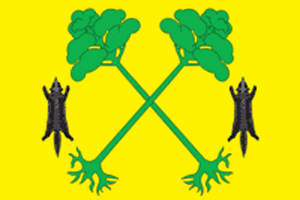
Tyukalinsk is a town in Omsk Oblast, Russia, located 60 kilometers (37 mi) northeast of the Nazyvayevsk railway station on the Trans-Siberian Railway and 120 kilometers (75 mi) northwest of Omsk, the administrative center of the oblast. Population: 11,275 (2010 Russian census) ; 12,007 (2002 Census) ; 12,191 (1989 Soviet census) .

Sherbakulsky District is an administrative and municipal district (raion), one of the thirty-two in Omsk Oblast, Russia. It is located in the southwest of the oblast on the border with Kazakhstan. The area of the district is 2,300 square kilometers (890 sq mi). Its administrative center is the urban locality of Sherbakul. Population: 21,342 ; 25,486 (2002 Census) ; 29,906 (1989 Soviet census) . The population of Sherbakul accounts for 32.7% of the district's total population.

Sedelnikovsky District is an administrative and municipal district (raion), one of the thirty-two in Omsk Oblast, Russia. It is located in the east of the oblast. The area of the district is 5,200 square kilometers (2,000 sq mi). Its administrative center is the rural locality of Sedelnikovo. Population: 10,943 ; 12,211 (2002 Census) ; 12,890 (1989 Soviet census) . The population of Sedelnikovo accounts for 48.6% of the district's total population.

Azovsky Nemetsky National District is an administrative and municipal district (raion), one of the thirty-two in Omsk Oblast, Russia. It is located in the south of the oblast. The area of the district is 1,400 square kilometers (540 sq mi). Its administrative center is the rural locality of Azovo. In the Russian Census of 2010, the population was 22,925. The population of Azovo accounts for 26.2% of the district's total population.

Isilkulsky District is an administrative and municipal district (raion), one of the thirty-two in Omsk Oblast, Russia. It is located in the southwest of the oblast. The area of the district is 2,800 square kilometers (1,100 sq mi). Its administrative center is the town of Isilkul. Population: 18,942 ; 22,216 (2002 Census) ; 22,691 (1989 Soviet census) .

Maryanovsky District is an administrative and municipal district (raion), one of the thirty-two in Omsk Oblast, Russia. It is located in the southwest of the oblast. The area of the district is 1,700 square kilometers (660 sq mi). Its administrative center is the urban locality of Maryanovka. Population: 27,595 ; 27,802 (2002 Census) ; 30,173 (1989 Soviet census) . The population of Maryanovka accounts for 31.3% of the district's total population.

Omsky District is an administrative and municipal district (raion), one of the thirty-two in Omsk Oblast, Russia. It is located in the southern central part of the oblast. The area of the district is 3,600 square kilometers (1,400 sq mi). Its administrative center is the rural locality of Rostovka. Population: 94,086 ; 94,251 (2002 Census) ; 90,461 (1989 Soviet census) . The population of Rostovka accounts for 5.8% of the district's total population.

Sargatsky District is an administrative and municipal district (raion), one of the thirty-two in Omsk Oblast, Russia. It is located in the center of the oblast. The area of the district is 3,800 square kilometers (1,500 sq mi). Its administrative center is the urban locality of Sargatskoye. Population: 20,014 ; 22,320 (2002 Census) ; 23,923 (1989 Soviet census) . The population of Sargatskoye accounts for 40.8% of the district's total population.
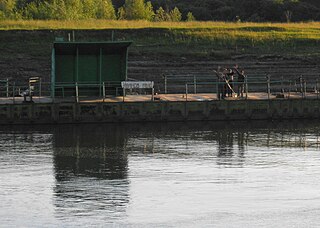
Tevrizsky District is an administrative and municipal district (raion), one of the thirty-two in Omsk Oblast, Russia. It is located in the north of the oblast. The area of the district is 9,800 square kilometers (3,800 sq mi). Its administrative center is the urban locality of Tevriz. Population: 15,485 ; 18,090 (2002 Census) ; 20,249 (1989 Soviet census) . The population of Tevriz accounts for 45.1% of the district's total population.

Ust-Ishimsky District is an administrative and municipal district (raion), one of the thirty-two in Omsk Oblast, Russia. It is located in the northwest of the oblast. The area of the district is 7,846 square kilometers (3,029 sq mi).} Its administrative center is the rural locality of Ust-Ishim, which, as its name indicates, is located at the confluence of the Ishim River with the Irtysh.

Znamensky District is an administrative and municipal district (raion), one of the thirty-two in Omsk Oblast, Russia. It is located in the north of the oblast. The area of the district is 3,700 square kilometers (1,400 sq mi). Its administrative center is the rural locality of Znamenskoye. Population: 12,427 ; 13,876 (2002 Census) ; 15,046 (1989 Soviet census) . The population of Znamenskoye accounts for 42.6% of the district's total population.

Abatsky District is an administrative district (raion), one of the twenty-two in Tyumen Oblast, Russia. As a municipal division, it is incorporated as Abatsky Municipal District . It is located in the southeast of the oblast. The area of the district is 4,080 square kilometers (1,580 sq mi). Its administrative center is the rural locality of Abatskoye. Population: 19,837 ; 23,566 (2002 Census) ; 26,453 (1989 Soviet census) . The population of Abatskoye accounts for 40.1% of the district's total population.

Azovo is a rural locality and the administrative center of Azovsky Nemetsky National District of Omsk Oblast, Russia. Population: 5,997 (2010 Russian census) ; 5,376 (2002 Census) ;

Ust-Ishim is a rural locality and the administrative center of Ust-Ishimsky District, Omsk Oblast, Russia. Population: 4,802 (2010 Russian census) ; 5,060 (2002 Census) ; 5,795 (1989 Soviet census) .
- ↑ Президент Российской Федерации. Указ №849 от 13 мая 2000 г. «О полномочном представителе Президента Российской Федерации в федеральном округе». Вступил в силу 13 мая 2000 г. Опубликован: "Собрание законодательства РФ", No. 20, ст. 2112, 15 мая 2000 г. (President of the Russian Federation. Decree # 849 of May 13, 2000 On the Plenipotentiary Representative of the President of the Russian Federation in a Federal District . Effective as of May 13, 2000.).
- ↑ Госстандарт Российской Федерации. №ОК 024-95 27 декабря 1995 г. «Общероссийский классификатор экономических регионов. 2. Экономические районы», в ред. Изменения №5/2001 ОКЭР. ( Gosstandart of the Russian Federation. # OK 024-95 December 27, 1995 Russian Classification of Economic Regions. 2. Economic Regions , as amended by the Amendment # 5/2001 OKER. ).
- ↑ "Сведения о наличии и распределении земель в Российской Федерации на 01.01.2019 (в разрезе субъектов Российской Федерации)" . Federal Service for State Registration, Cadastre and Cartography . Archived from the original on 9 February 2022 . Retrieved 29 August 2023 .
- ↑ "Оценка численности постоянного населения по субъектам Российской Федерации" . Federal State Statistics Service . Retrieved 1 September 2022 .
- ↑ "26. Численность постоянного населения Российской Федерации по муниципальным образованиям на 1 января 2018 года" . Federal State Statistics Service . Retrieved 23 January 2019 .
- ↑ "Об исчислении времени" . Официальный интернет-портал правовой информации (in Russian). 3 June 2011 . Retrieved 19 January 2019 .
- ↑ Official throughout the Russian Federation according to Article 68.1 of the Constitution of Russia .
- 1 2 3 Russian Federal State Statistics Service (2011). Всероссийская перепись населения 2010 года. Том 1 [ 2010 All-Russian Population Census, vol. 1 ] . Всероссийская перепись населения 2010 года [2010 All-Russia Population Census] (in Russian). Federal State Statistics Service .
- ↑ Ишимская степь ; Great Soviet Encyclopedia in 30 vols. — Ch. ed. A.M. Prokhorov . - 3rd ed. - M. Soviet Encyclopedia, 1969-1978. (in Russian)
- ↑ "История Омской области" . Omskobl.ru. Archived from the original on 22 November 2012 . Retrieved 13 August 2012 .
- ↑ "Newsline - May 20, 1996 Yeltsin Promises to Maintain Stability, Plays Regional Card" . Radio Free Europe/Radio Liberty . 20 May 1996 . Retrieved 2 May 2019 .
- ↑ Chuman, Mizuki. "The Rise and Fall of Power-Sharing Treaties Between Center and Regions in Post-Soviet Russia" (PDF) . Demokratizatsiya : 146. Archived (PDF) from the original on 9 October 2022.
- ↑ "Список общественных объединений, имеющих право участвовать в выборах - Управление Министерства юстиции Российской Федерации по Омской области" [ List of public associations eligible to participate in elections - Office of the Ministry of Justice of the Russian Federation for the Omsk Region ] . to55.minjust.ru . Retrieved 11 March 2019 .
- ↑ Отчёт о работе администрации города Омска в 2005—2009 годах
- ↑ "Журнал "Forbes" - 30 лучших городов для бизнеса — 2010" (in Russian). 27 May 2010 . Retrieved 30 March 2011 .
- ↑ Галина Балашенко «Заниматься бизнесом станет проще» // «Домашняя газета» № 22 (065), 9 июня 2010 года
- ↑ Russian Regional Economic and Business Atlas Volume 2: Strategic Investment and Business Information ISBN 978-1-577-51030-7 p. 131
- ↑ Russian Federal State Statistics Service. Всероссийская перепись населения 2020 года. Том 1 [ 2020 All-Russian Population Census, vol. 1 ] (XLS) (in Russian). Federal State Statistics Service .
- ↑ Federal State Statistics Service (21 May 2004). Численность населения России, субъектов Российской Федерации в составе федеральных округов, районов, городских поселений, сельских населённых пунктов – районных центров и сельских населённых пунктов с населением 3 тысячи и более человек [ Population of Russia, Its Federal Districts, Federal Subjects, Districts, Urban Localities, Rural Localities—Administrative Centers, and Rural Localities with Population of Over 3,000 ] (XLS) . Всероссийская перепись населения 2002 года [All-Russia Population Census of 2002] (in Russian).
- ↑ Всесоюзная перепись населения 1989 г. Численность наличного населения союзных и автономных республик, автономных областей и округов, краёв, областей, районов, городских поселений и сёл-райцентров [ All Union Population Census of 1989: Present Population of Union and Autonomous Republics, Autonomous Oblasts and Okrugs, Krais, Oblasts, Districts, Urban Settlements, and Villages Serving as District Administrative Centers ] . Всесоюзная перепись населения 1989 года [All-Union Population Census of 1989] (in Russian). Институт демографии Национального исследовательского университета: Высшая школа экономики [Institute of Demography at the National Research University: Higher School of Economics]. 1989 – via Demoscope Weekly .
- ↑ "Information on the number of registered births, deaths, marriages and divorces for January to December 2022" . ROSSTAT . Archived from the original on 2 March 2023 . Retrieved 21 February 2023 .
- ↑ "Birth rate, mortality rate, natural increase, marriage rate, divorce rate for January to December 2022" . ROSSTAT . Archived from the original on 2 March 2023 . Retrieved 21 February 2023 .
- ↑ Суммарный коэффициент рождаемости [ Total fertility rate ] . Russian Federal State Statistics Service (in Russian). Archived from the original (XLSX) on 10 August 2023 . Retrieved 10 August 2023 .
- ↑ "Демографический ежегодник России" [ The Demographic Yearbook of Russia ] (in Russian). Federal State Statistics Service of Russia (Rosstat) . Retrieved 1 June 2022 .
- ↑ "Перепись-2010: русских становится больше" . Perepis-2010.ru. 19 December 2011. Archived from the original on 7 January 2019 . Retrieved 13 August 2012 .
- ↑ "Демография Омской области" . Demograf.omskmintrud.ru. Archived from the original on 19 February 2012 . Retrieved 13 August 2012 .
- ↑ "Демография Омской области" . Demograf.omskmintrud.ru. Archived from the original on 10 March 2012 . Retrieved 13 August 2012 .
- 1 2 3 "Arena: Atlas of Religions and Nationalities in Russia" . Sreda, 2012.
- ↑ 2012 Arena Atlas Religion Maps . "Ogonek", № 34 (5243), 27 August 2012. Retrieved 21 April 2017. Archived .
- ↑ Hungary Russia sister city relationships
| (48) | |
|---|---|
| (24) | |
| (9) | |
| (4) | |
| (3) | |
| (1) | |
| Considered by most of the international community to be part of . Administratively subordinated to . Administratively subordinated to . | |
| (by ) (by ) (by ) |
| : • | |
| Districts | |
| Cities and towns | |

COMMENTS
The IOR Maxis - 1980s. After appreciating the long, narrow and undistorted lines of the current record-breaking 30m yachts like Wild Oats XI and Rambler 100 (see previous post), it is interesting to look at what the state-of-the-art used to be, represented here in a collection of photographs of yachts from the former 'Maxi' class (70.0ft IOR ...
OUR GOAL. 39 years ago the International Maxi Association was started as a small gathering of maxi yacht owners wishing to bring more co-ordination to their sailing. Since then it has grown both in the size of its membership and its remit, to become an organization with much wider influence and endorsed by World Sailing to organize World ...
A yacht with a rating of 12 metres (40 ft) was generally about 14 to 16 metres (47 to 52 ft) in length overall. The IOR had upper and lower rating limits of 4.9 metres (16 ft) and 21 metres (70 ft), so a yacht designed and built to exceed the maximum limit of 21 metres (70 ft) rating was known as a maxi. Being the biggest sailing yachts afloat ...
Longobarda was a breakthrough IOR maxi that set a new standard in the class during 1989 until the early 1990s. She was the product of a successful combination of Bruce Farr design talent, SAI Ambrosini (Italy) build quality and a no-expense-spared budget, courtesy of her owner, Italian yachtsman Gianni Varasi (who had previously owned Raul Gardini's earlier yacht, Il Moro di Venezia II).
The A Class referred to maxi yachts with a rating of 60 to 70 feet under the IOR gauge, used at that time. However, the majority were 80 feet with a displacement of 35 to 40 tons. Known to be the largest racing yachts, Maxis always have the best chance of finishing first.
Windward Passage was one of the best-known Maxi yachts of the IOR period, and greatly admired for her longevity that spanned much this era, thanks to continual upgrades and the age allowance provisions of the rule. Windward Passage was designed by Alan P Gurney for Robert Johnson of the New York Yacht Club, to replace his earlier yacht Ticonderoga, and the ocean racer was built by Grand Bahama ...
By the mid-1980s he had become one of the most successful designers of the IOR era. The yacht names ... Frers's name was synonymous with success on the maxi circuit from the early days of ...
The 2024 Maxi Yacht Rolex Cup will feature the very first World Championship for Maxi 1. Taking place out of Porto Cervo over 8-14 September as part of the main event, the "Rolex IMA Maxi 1 World Championship" will be open to maxi yachts with an IRC TCC of 1.700-2.200 and up to 30.51m (100ft) in length. Typically it will include larger maxis ...
The Association was initially named ICAYA (International Class "A" Yacht Association). In March 2001, after the abolition of the Class A and the IOR classification, the name was changed into International Maxi Association (I.M.A.). At the 2009 ISAF mid-year meeting the IMA was granted provisional status for the Mini Maxi
Yacht description. Longobarda was a breakthrough IOR maxi that set a new standard in the class during 1989 until the early 1990s.She was the product of a successful combination of Bruce Farr design talent, SAI Ambrosini (Italy) build quality and a no-expense-spared budget, courtesy of her owner, Italian yachtsman Gianni Varasi (who had previously owned Raul Gardini's earlier yacht, Il Moro di ...
While some IOR yachts race at club level under IRC in more or less their original form, others had major surgery to make them competitive within the new rules. ... 1/2 Ton, 3/4 Ton and Two Ton classes, as well as unofficial 50-footer, ULDB 70, and Maxi classes. The official classes each had an annual world championships. The IOR was run by the ...
We have visited the Maxi 82 by Farr Yacht Design in Portugal. Longobarda was a breakthrough IOR maxi that set a new standard in the class during 1989 until the early 1990s. She was the product of a successful combination of Bruce Farr design talent, SAI Ambrosini (Italy) build quality and a no-expense-spared budget, courtesy of her owner, Italian yachtsman Gianni Varasi (who had previously ...
The IOR maxi Kialoa III last sailed at Antigua Sailing Week in 1979. This year she was back after sailing 8,000 miles to get there
This second installment of SAIL's series on the evolution of modern sailboat design focuses on the 1970's—the IOR decade and beyond. It was also the decade of racer/cruisers, cruiser/racers, dedicated cruisers, the rise of trailersailers, and the first of the fun, fast day racers—the J/24 and the Santa Cruz 27.The adoption in the late 1960s of the International Offshore Rule (IOR) spelled
First of all, IOR-yachts are a kind of unstable boats in terms of seakindness. Due to the round chined hull and the wide girth, those boats are sailing massively heeled and are always in heavy motion even in lighter swell. Modern yachts with wider sterns and pronounced chines are heeling up to a certain point and will then sail very stable.
The "bulb" concept reflects our research in maxi yacht keel design, which has proven that our creation of narrow, deep, high performance foils will work even better in conjunction with a bulb. The hull and fractionally rigged sail configurations are total Grand Prix IOR race boat rating 40.
IOR MAXI "HISPANA". Design 179 was designed early in 1987 as a round the buoys IOR Maxi race boat. With keel and trim variations the boat would also be entered in long distance races like the Route of Discovery race from Cadiz Bay, Spain to Santo Domingo. The design program benefited from limited tank testing of 1/4 scale models to examine ...
Main picture: The greatest-looking but sadly not the fastest IOR Maxi of all, Windward Passage II was designed by German Frers for Australian Rod Muir and was the first proper all-carbon Maxi when launched in 1988 - soon to quickly outclass all of her aluminium-built rivals. However, like the rest of the Maxi fleet of the time, Passage could ...
April 1, 2024 at 3:26 pm #90602. Mull 82 MAXI Sorcery. Participant. I own this fantastic Aluminum IOR MAXI Sorcery and it's not listed in Gary Mulls Bio nor listed boats. I'm in possession of extensive information regarding the build even the CONTRACT with Jacob Wood for design services and much more.
This much lighter design was a great deal quicker around the world and potentially showed a new beginning for lightweight IOR racers. Sadly, however, these three Farr ketches, La Poste, Merit Cup and New Zealand Endeavour, were one of the last throws of the dice for IOR. New Zealand Endeavour - one of three new Farr-designed Whitbread Maxi ...
Omsk Oblast (Russian: О́мская о́бласть, romanized: Omskaya oblast') is a federal subject of Russia (an oblast), located in southwestern Siberia.The oblast has an area of 139,700 square kilometers (53,900 sq mi). Its population is 1,977,665 (2010 Census) [10] with the majority, 1.12 million, living in Omsk, the administrative center.One of the Omsk streets
The coat of arms of the Omsk Oblast in Russia were adopted 29 April 2020 by Governor Alexander Burkov.. Design. The official heraldic description reads as follows: On a red field there is a silver cross defaced with a wavy blue pallet, and over both in the middle is a contour of a five-bastioned fortress in red, with one bastion pointing up.
Omsk Oblast (Russian: О́мская о́бласть, romanized: Omskaya oblast' ) is a federal subject of Russia (an oblast), located in southwestern Siberia. The oblast has an area of 139,700 square kilometers (53,900 sq mi). Its population is 1,977,665 (2010 Census) with the majority, 1.12 million, living in O